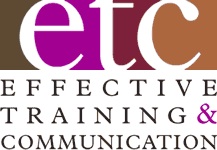How you use speaker support slides to reinforce and support your message has a direct impact on accomplishing your audience-centric outcomes. PowerPoint – or other similar software packages – has the capacity to provide you with efficient, effective and attractive slides. But, how and why presenters use this great tool makes all the difference.
So, let’s add a few new or different tools to your Presenter Tool Kit and share PowerPoint Best Practices. To get us in the mood, let’s discuss Worse Practices first.
How many of you have been the victim of ‘Death by PowerPoint’? I see a lot of hands raised. Remember, it’s not the fault of the software, but of the user. PowerPoint will do most anything you ask it to do – even dumb things. It has user-friendly functionalities, but no taste, soul or intelligence … yet.
The real problem with speaker support slides is the widespread abuse of the resource and the pain inflicted upon countless audiences by presenters who have no chance of making the Varsity Team. Typically, you begin anticipating the worst when you walk into a meeting room and see a title slide on the screen and the dimmed lights. That anticipation of pain can affect your attitudes about the message and the messenger, even before one word is spoken. And it can take some time for you to change those attitudes.
So, let’s return to your new-found discipline of planning audience-centric, results-driven presentations with these questions to answer every time.
1. Do you need slides at all? Don’t assume the answer is a given. Review your defined outcomes, content and audience analysis and then determine if this audience needs slides to fully understand and participate in this communication process. If ‘no’, you’ve saved yourself some time and them some potential pain. If ‘yes’, then move on to step #2.
2. What role will the slides play to enhance the audience’s attention, understanding and engagement? Will they introduce, exemplify or summarize key content points or
visualize or clarify complex concepts? How will the audience benefit from the slides? We use slides because we should, not because we can.
3. How many do you need? There is no magic formula to follow except ‘enough to accomplish the role they’re supposed to play – and no more’. One could be the right number. So could 100. Make this decision on a case basis.
4. Do you need slides on all the time? Effective presentations shouldn’t be slide shows with a dimly seen narrator. If there are parts of your presentation that don’t need slides, either advance to an empty screen or a slide with only your background pattern and no copy. Turning the projector on and off can be annoying and distracting. This ‘visual silence’ allows the audience to concentrate on you and your message. Bring on the next slide when it’s time for it to do its job.
5. What about background colors? While the software can produce millions of colors, the human eye can only differentiate about 400. The difference is marketing hype. Choose colors and patterns that don’t get in the way of your pictures or copy. Consider different colors to separate different sections of your presentation. Consider incorporating the company or program logo in a subtle, non-distracting ‘wallpaper’ pattern.
6. What about the text? The software can also produce dozens of fonts, but there are only about 10 in wide use in most corporate presentations. The same goes for handouts. Pick one that is thick and easy to read from the cheap seats. Make sure there’s plenty of contrast between text color and background color. When in doubt, print a sample in black and white to see if the contrast works.
7. What size font? For maximum clarity and ease of reading, use 28-point headers, 26-point bullet copy and 24-point for indented text.
We’ll stop for now to avoid ‘Death by Data Dump’ and continue our discussion in the next issue. Then, we’ll focus on more design Best Practices and include tips on what to do/not do and say/ not say when using slides. You may need to get a larger Tool Kit when we’re finished.
As always, comments and questions welcome at phil@communicate-confidently.com.

